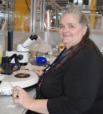
Showing 261 - 280 of 382 results

Facilities
ANSTO has a full suite of mineralogical, chemical and hydrometallurgical facilities from laboratory through to pilot scale.

Role at ANSTO
Crucial expertise in groundwater benefits Australia
Using nuclear techniques to help sustain Australia's finite groundwater resources
Revealing the sources of Sydney’s air pollution

Role at ANSTO
Nuclear techniques reveal ‘tunability' of membranes for enhanced electrical conductivity in graphene

Media Centre
Funding supports biomedical research
ANSTO part of consortium funded by Federal Government to develop new radioimmunological drugs.
Pioneering techniques advance understanding of metals under extreme conditions
Australian Synchrotron to join consortium mapping the human brain
Consortium will map the 86 billion nerve cells, 100 trillion connections and neurotransmitters in the human brain.
Radiation biology in space
In space, without the protection of the magnetosphere, the type and dose of radiation is considerably different to what is naturally experienced on earth.
Bushfire charcoal particles carried an unprecedented distance
Charcoal particles from recent bushfires in NSW were carried 50 kilometres by the wind, which has significance for fire history reconstruction.

Role at ANSTO

Soft x-ray spectroscopy
Soft x-rays are generally understood to be x-rays in the energy range 100-3,000 eV. They have insufficient energy to penetrate the beryllium window of a hard x-ray beamline but have energies higher than that of extreme ultraviolet light.

AUM2019 - Accommodation & Transport
Recommended accommodation and transport information.
Neutron scattering scientists recognised by their peers

Medium Energy X-ray Absorption Spectroscopy Beamline (MEX-1 and MEX-2)
The Medium Energy- X-ray Absorption Spectroscopy beamlines will provide access to XANES and EXAFS data from a bending magnet source, optimised for cutting-edge applications in biological, agricultural and environmental science in an energy range that is not currently available at the Australia Synchrotron.
A closer look at the science of detecting flu
